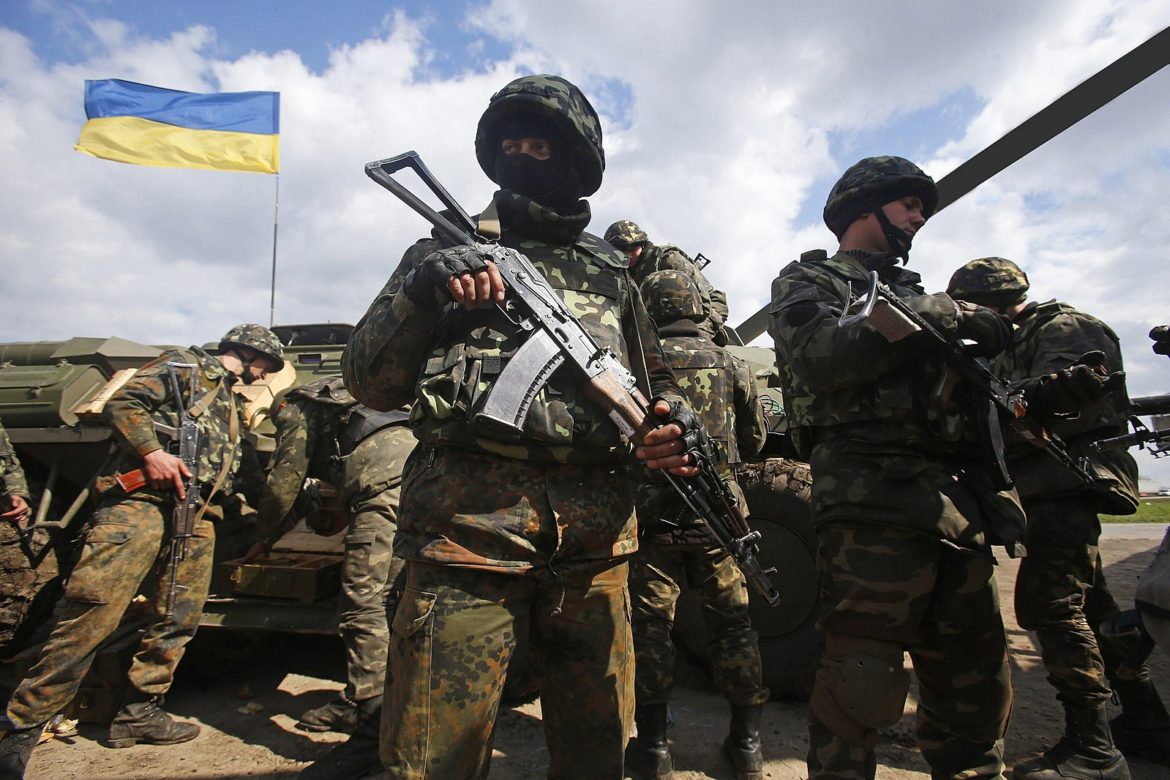As tensions heighten and military buildup intensified along the Russo-Ukrainian border, the American government did not deviate from its staunch insistence that Ukraine must, at some point, be allowed to join NATO. The United States has framed the debate over Ukrainian membership as a question of sovereignty, insisting that preventing Ukraine’s eventual admittance into NATO constitutes an attack upon the self-determination of the Ukrainian people. Meanwhile, critics of the West accuse the United States of hypocrisy, arguing that America is cloaking its own expansionist aims in the rhetoric of state rights while continuing to deny the sovereignty of other nations through a succession of interventions in the Middle East.
The American government’s rhetoric has been echoed by the Western press; media companies have played into Cold War narratives about the inherent hostility of the Russian state by attributing Moscow’s stance on Ukraine to “obsessive stalking” and “galloping expansionism.” Playing into stereotypes about Russian aggression serves a number of functions. First, painting the United States as a valiant defender of freedom against an expansionist Russia reinforces American influence across the European continent. In 2013, Carl Gershman, founder of the CIA-affiliated National Endowment for Democracy, referred to Ukraine as “the biggest prize,” arguing that “Ukraine’s choice to join Europe [would] accelerate the demise of the ideology of Russian imperialism that Putin represents.” Russia functions as a counterweight to the United States in a world dominated by the Western social and economic order. If Ukraine, and by extension Russia, was subsumed by NATO, the United States would enjoy a massive boost of influence over the European continent.
Portraying the Russo-Ukrainian conflict as a battle between an expansionist foreign power and a small state fighting for sovereignty also generates readership. In Manufacturing Consent, Noam Chomsky identifies anticommunism as America’s “national religion,” arguing that fears about communist expansion hold considerable sway over the American population. While Russia is no longer a communist country, the spectre of Eastern political subversion remains embedded in the collective consciousness of the American people. News headlines play upon the vestiges of American anticommunism, drawing in readers by framing the conflict as an inevitable consequence of Russia’s political deviancy. War between Russia, Ukraine, and NATO is by no means inevitable. However, Western media outlets mask this reality by divorcing the conflict from the contextual factors that underpin it.
To understand the Ukrainian crisis within its historical context, one must first examine the concept of encirclement. Throughout the Cold War, both the United States and the Soviet Union were consumed by fears that their spheres of influence were being slowly choked by the global expansion of a hostile ideology. This dynamic frequently led to the globalization of local conflicts as both sides raced to advance their competing visions of the post-war world order. Throughout the process of German reunification, Western leaders repeatedly assured former Soviet President Mikhail Gorbachev that NATO would not expand eastward. This was a critical issue for the Soviets, who for years had viewed Eastern Europe as a buffer between their heartland and the hostility of the West. As the Soviet Union’s peripheral satellite states gained independence, Moscow felt reassured by promises from Western officials such as U.S. Secretary of State James Baker, who promised that NATO would move “not one inch eastward.” Since German reunification however, NATO has added an additional 14 members to its ranks, many of which are former Soviet satellite states. Russia interprets the eastward encroachment of NATO, a military alliance originally formed to threaten its interests, as an existential threat and a violation of the promises made years ago by the West.
Despite NATO’s concerted effort to expand into the post-Soviet sphere, Western headlines ironically continue to identify Russia’s “unbalanced expansion” as the primary driver of a conflict that the West cannot stop. The cumulative effect of media fear mongering is the manufacture of popular consent for a wholly unnecessary war in Europe. It is possible for all sides of the conflict to reach a compromise; this was already done in 2015, when Russia, Ukraine, Ukrainian separatist leaders, and the Organization for Security and Cooperation in Europe signed the Minsk II agreement. The agreement called for both the demilitarization and decentralization of Ukraine, with the presupposition of Ukrainian neutrality and non-membership in NATO. Further, the agreement mandated that Ukraine would adopt full control of its border with Russia. As of 2018 however, Ukrainian news outlets reported that not a single one of Minsk II’s provisions had been implemented. The lack of follow-through after Minsk II’s signing has been largely attributed to disagreements over the timing of the provisions, as well as a lack of enforcement by the international community at large. Its existence, however, demonstrates that Russia is open to negotiations, and that peaceful resolution is possible if the United States agrees to make concessions — despite what Western media outlets claim.
With all this said, the Russian government is also at fault for the conflict’s creation and escalation. Russia remains a coercive, imperialist state. Its invasion of Ukraine violates international law. Still, even withholding invasion, one is left to wonder how the United States would react if Mexico were to join a hostile military alliance and begin constructing foreign military bases along its border. Perhaps we can look to Cuba for answers.
Edited by Kimberly Nicholson
Madalena Monteiro is in her third year at McGill, and is currently pursuing a Joint Honours degree in Political Science and International Development. Her areas of interest include women’s issues, labour rights, and global power dynamics.

